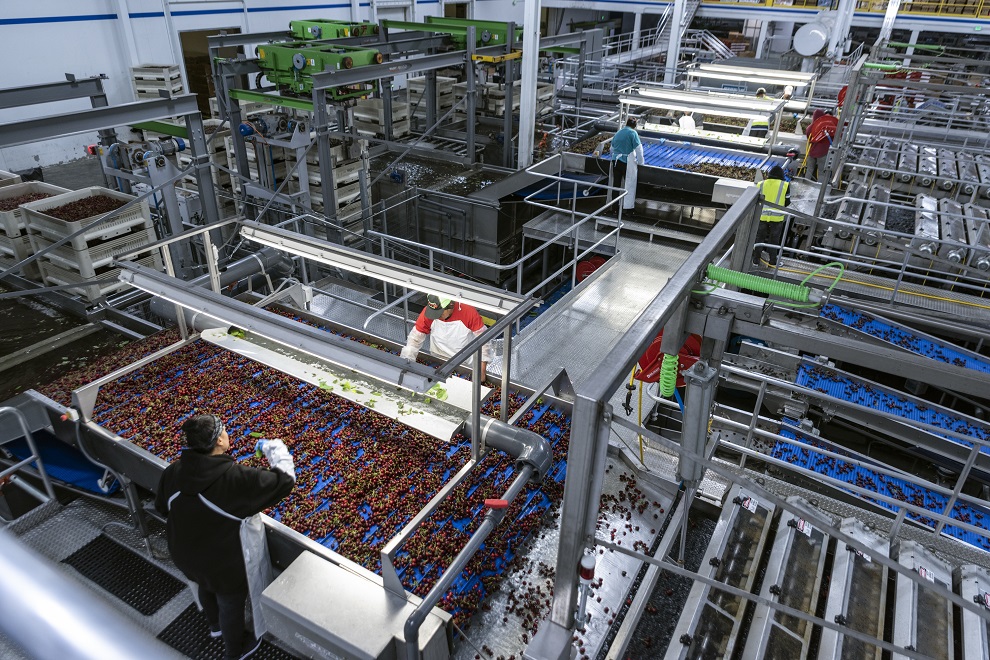
Mar 22, 2023 | Industrial, Services
When it comes to food production, there are strict standards during the manufacturing process to maintain safety standards. With smooth internal surfaces & ease of cleaning, sanitary pumps meet these requirements to protect against bacteria and other contaminants. Northwest Pump offers several sanitary pump options for many different applications, whether it be for a thick yogurt slurry or freshly pressed oil.
Do all pumps in a plant need to be sanitary pumps?
No, not all pumps in a food production plant need to be sanitary. A sanitary pump is only necessary when it is in direct contact with food products. Grundfos, for example, does not offer sanitary pumps. What it offers instead is pressure-boosting equipment as well as pumps to clean out the sanitary equipment already present in a facility.
What makes equipment sanitary?
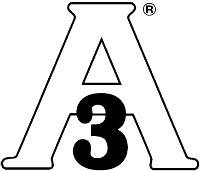
3-A symbol from the International Association of Milk, Food, and Environmental Standards
The FDA regulates Food Contact Substances (FCS) ranging from the pumping equipment processing the food, to the coverings on an at-home coffee machine. The key feature of sanitary equipment is a smooth surface that can be easily cleaned. Manufacturers of sanitary pumps can offer easily disassembled pumps to increase the ease of cleaning, depending on the brand. A sanitary pump will typically be made of stainless steel 316A, or alternatively will be made of a non-porous plastic. The International Association of Milk, Food, & Environmental Standards also has a symbol called 3A to show when a pump meets these classifications. This and the FDA logos will appear on pump literature when the product meets these requirements.
Are sanitary & hygienic the same thing?
The main difference between hygienic and sanitary equipment is in their applications. The FDA classification for sanitary pumps must meet higher standards for consumer product manufacturing. Hygienic pumps on the other hand, are for high-volume transfer applications for food & beverage, cosmetics, and even pharmaceutical processing.
Our Sanitary Products
Northwest Pump offers sanitary & hygienic pumps for a variety of applications. Our main vendor for sanitary pump equipment is PSG, a Dover Company, through its Wilden, Mouvex, and Abaque brands. We now also offer vacuum pumps through Atlas Copco, for canning and other sanitary applications. In addition to these pumps, Northwest Pump now offers food-grade valves, fittings, and other ancillary pumping equipment through Dixon Valve & Fitting. For food-grade lubricants, we have partnered with A.W. Chesterton Company. Finally, for food-safe compressed air, Northwest Pump offers oil-free compressors through Sullair.
Next Steps
Need a sanitary pump for your facility? You can contact our experts here, email them at sales@nwpump.com, or call 1-800-452-PUMP to discuss your application needs. Looking for service on your current sanitary pumps? Reach our service team here, email them at service@nwpump.com, or call 1-866-577-2755.
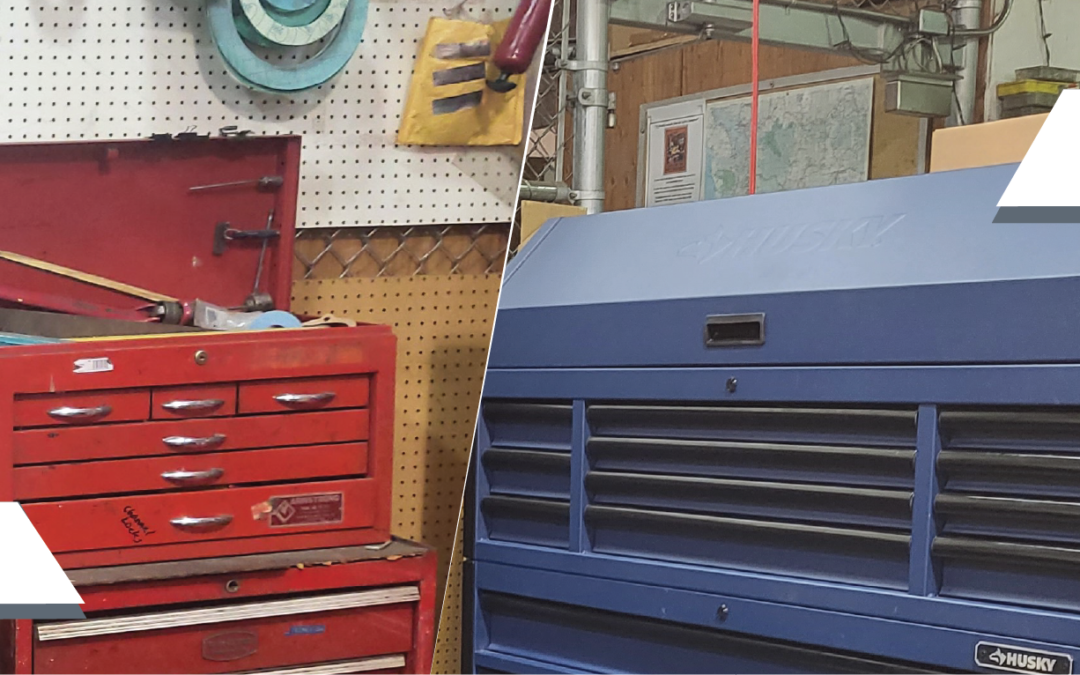
Dec 5, 2022 | Industrial, Services
Over the last few months, our Industrial service team has been working on revitalizing the Portland branch’s in-house pump shop. The end goal of this project is to build the most respected industrial pump repair shop in the country. Northwest Pump is committed to servicing your industrial equipment needs, and now we will expand our capabilities even further.
Learning from the best
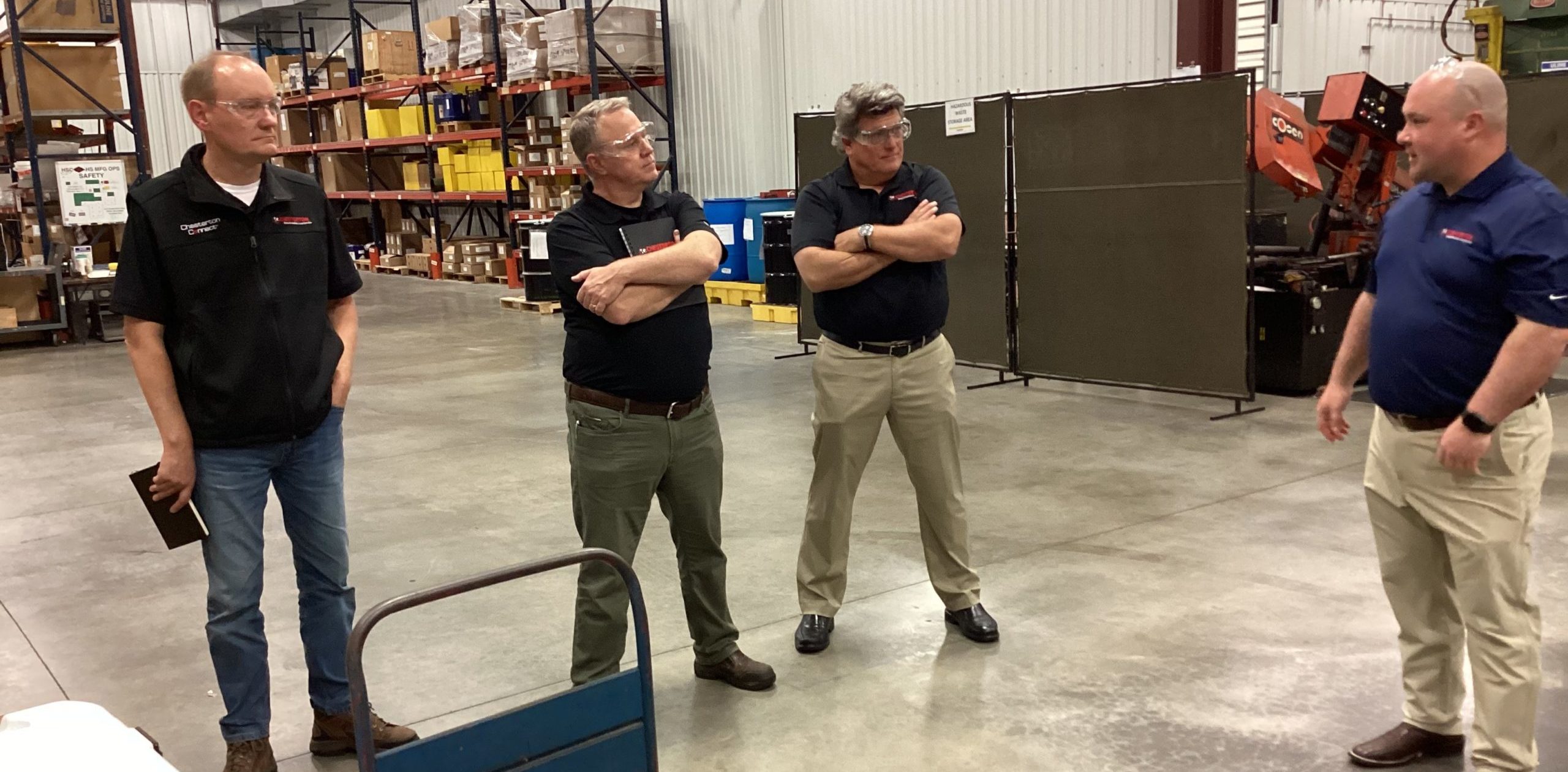
Our team realized the best way to start this journey was to look at other renowned pump shops across the United States to compare what they have, to where we want to be. With help from A.W. Chesterton, the team was able to visit pump fabrication facilities in the south-eastern US. This helped us know not only the type of equipment they utilize, but also the layout of the shop as well as the technical know-how our team needed to consider.
What to expect from the new pump shop
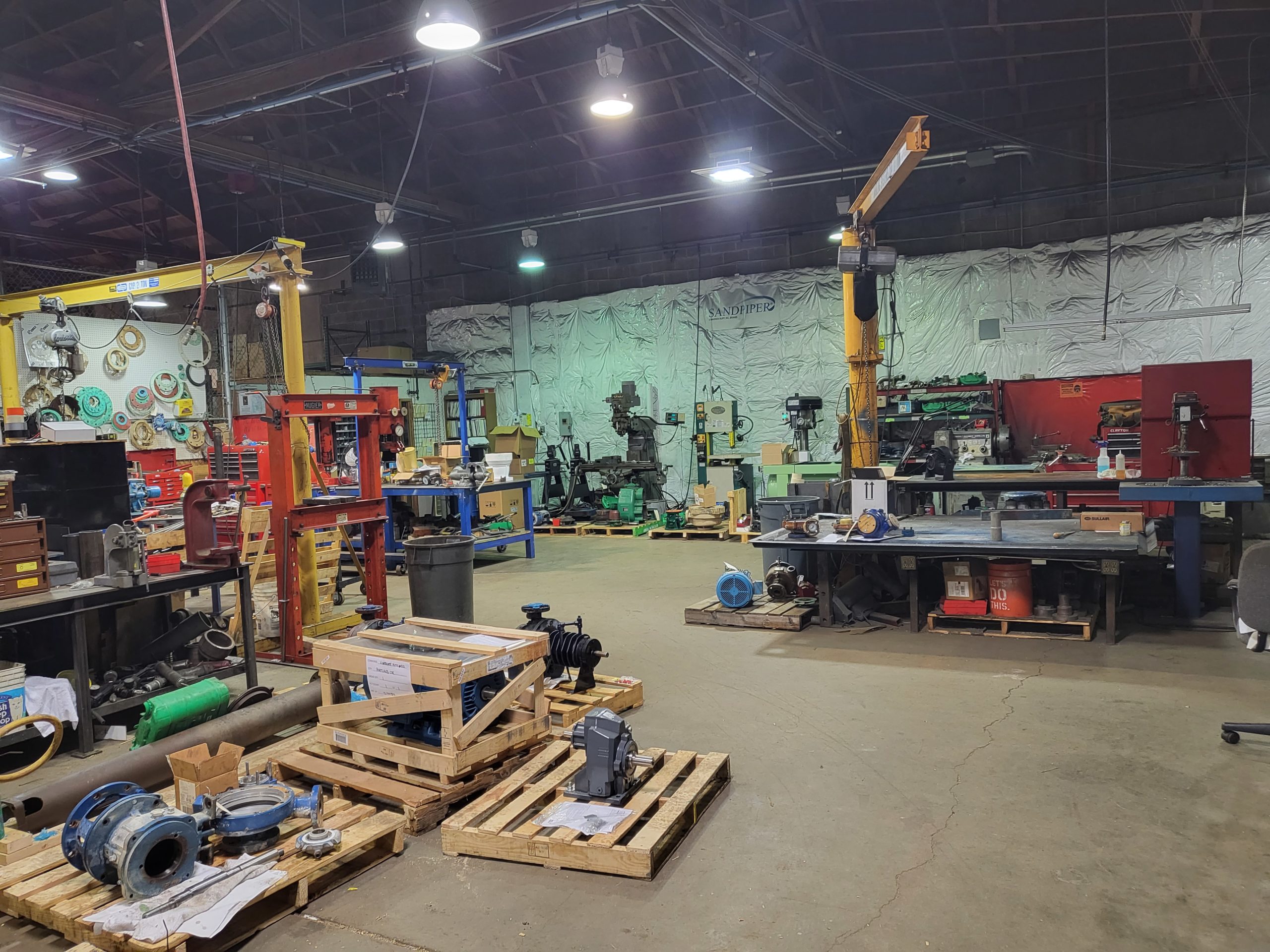
When the renovations are finished, Northwest Pumps’ repair shop will be assembling pump packages in-house. The packages will have Chesterton seals or packing as needed and be engineered with customer need first. We will also be able to increase production in compressor packages manufactured in-house as well.
In addition to assemblies, the shop will add an inside overhead crane to expand our capabilities when working with larger turbine pumps. The shop is also upgrading its dynamic balancer for more precise insights on the balance of the impellers that we work with.

What is new?
 In the time since the trip, our shop has upgraded its tool boxes for increased capacity & ease of use. Those visiting our Portland branch for any will calls should notice the warehouse now starting to make space for upcoming pump assemblies already. As we begin the process of updating the shop, we expect no impacts to repair times.
In the time since the trip, our shop has upgraded its tool boxes for increased capacity & ease of use. Those visiting our Portland branch for any will calls should notice the warehouse now starting to make space for upcoming pump assemblies already. As we begin the process of updating the shop, we expect no impacts to repair times.
Next Steps
Stay tuned for updates through social media or sign up for our service newsletter to receive them monthly below.
Looking for maintenance on your industrial pumps? Request an appointment here.
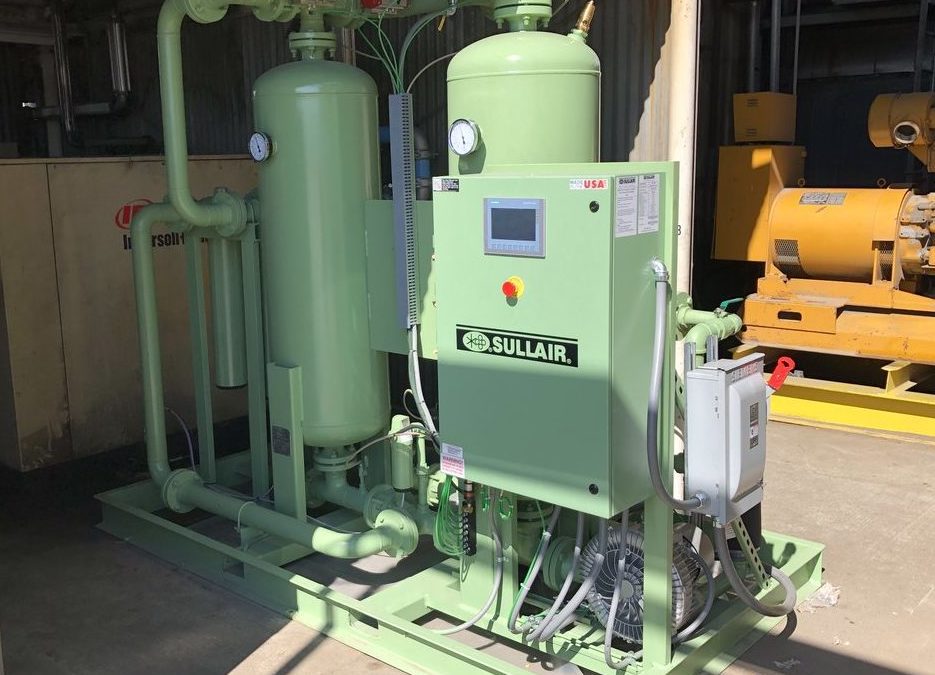
Nov 16, 2022 | Industrial
When investing in air compressors for your facility, it is also important to consider what other accessories might be needed along with the compressor & the piping. One of the more common accessories- especially in the Pacific Northwest- is an air dryer. Northwest Pump offers desiccant & refrigerated air dryers through Sullair and the other air compressor vendors that partner with Northwest Pump. The difference between all the variations of dryers depend on the way they remove moisture. Here are a few points to consider when looking for a compressed air dryer for your system.
Why use a compressed air dryer?
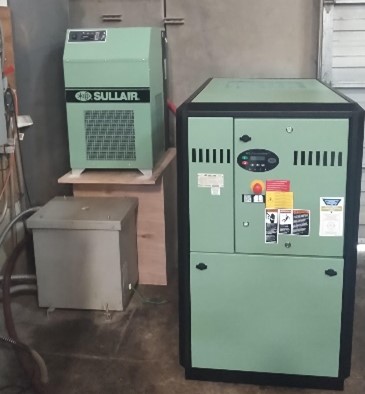 Facilities use dryers of either style to reduce the moisture in the compressed air. Excess moisture can cause problems for the equipment using the compressed air. Depending on the intended use, this moisture could also damage the end-product, reducing its quality or requiring it to be thrown out entirely.
Facilities use dryers of either style to reduce the moisture in the compressed air. Excess moisture can cause problems for the equipment using the compressed air. Depending on the intended use, this moisture could also damage the end-product, reducing its quality or requiring it to be thrown out entirely.
Refrigerated Dryers
Refrigerated dryers work much like a refrigerator in a kitchen does. These dryers reduce the temperature for the compressed air to approximately 35°F, causing the moisture mixed with the air to turn to condensate. The condensate is then stored within the dryer until it gets drained. The dry air then passes through a heat exchanger to be warmed back up before exiting the dryer.
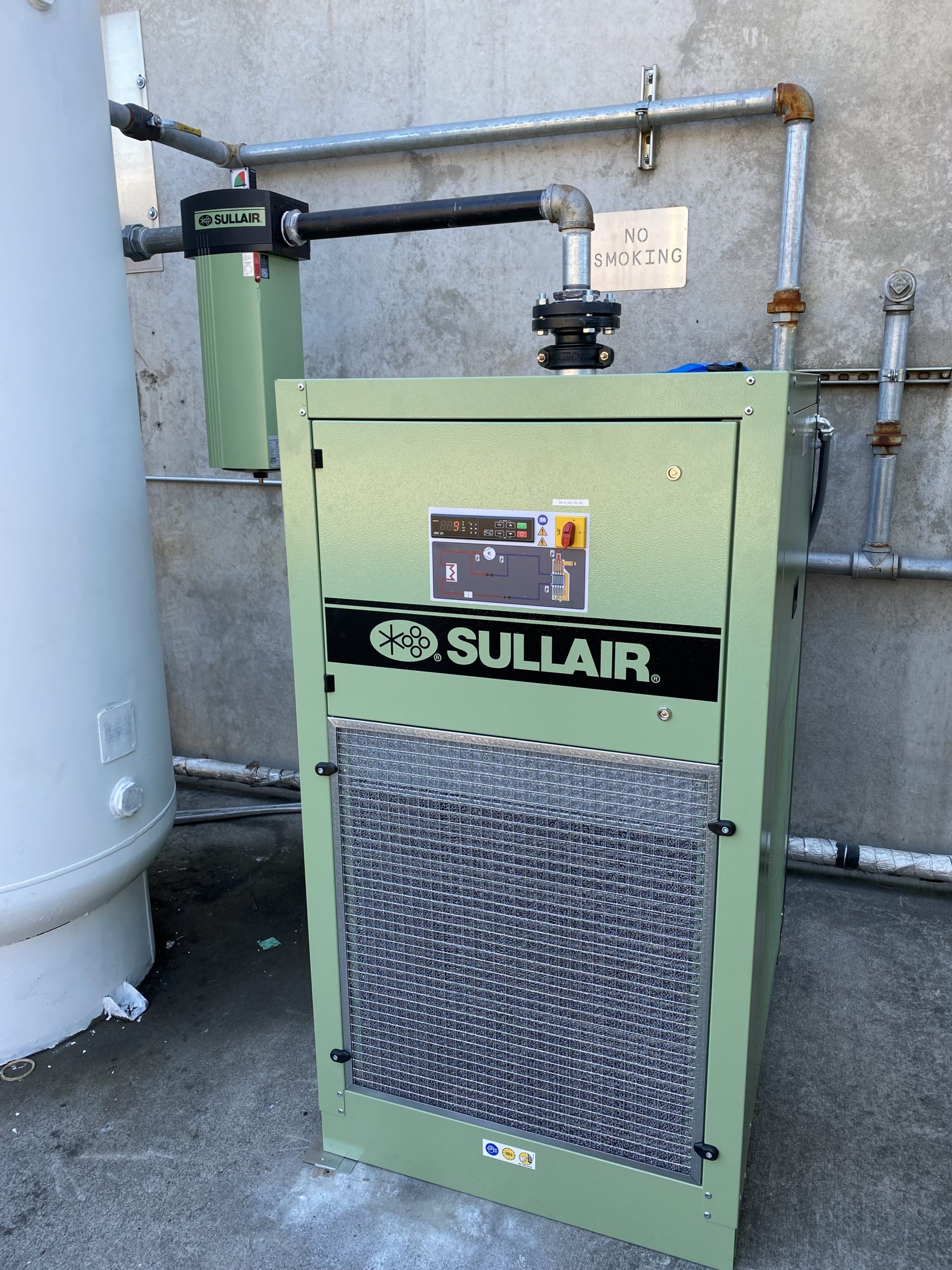 There are several advantages facilities with refrigerated dryers can expect. First, they tend to be a cheaper investment than other kinds of compressed air dryers. Refrigerated dryers also typically have reduced maintenance costs. However, the cost to operate a refrigerated dryer will vary drastically depending on the ambient temperature around the dryer itself.
There are several advantages facilities with refrigerated dryers can expect. First, they tend to be a cheaper investment than other kinds of compressed air dryers. Refrigerated dryers also typically have reduced maintenance costs. However, the cost to operate a refrigerated dryer will vary drastically depending on the ambient temperature around the dryer itself.
Facilities where winter temperatures drop to below freezing should expect to see an increase in costs when using a refrigerated dryer during the winter months. That is because the dewpoint, the point where moisture turns from a gas to a liquid, of the dryer is now higher than the temperature outside. For these reasons, refrigerated dryers are not suitable for installation in areas where temperatures reach 35°F or below. Even if the dryer is installed in a climate controlled area, if the compressed air system’s piping goes outside or is exposed to freezing temperatures, then water will condense in the lines. In this scenario, a desiccant dryer would be needed.
Desiccant Dryers
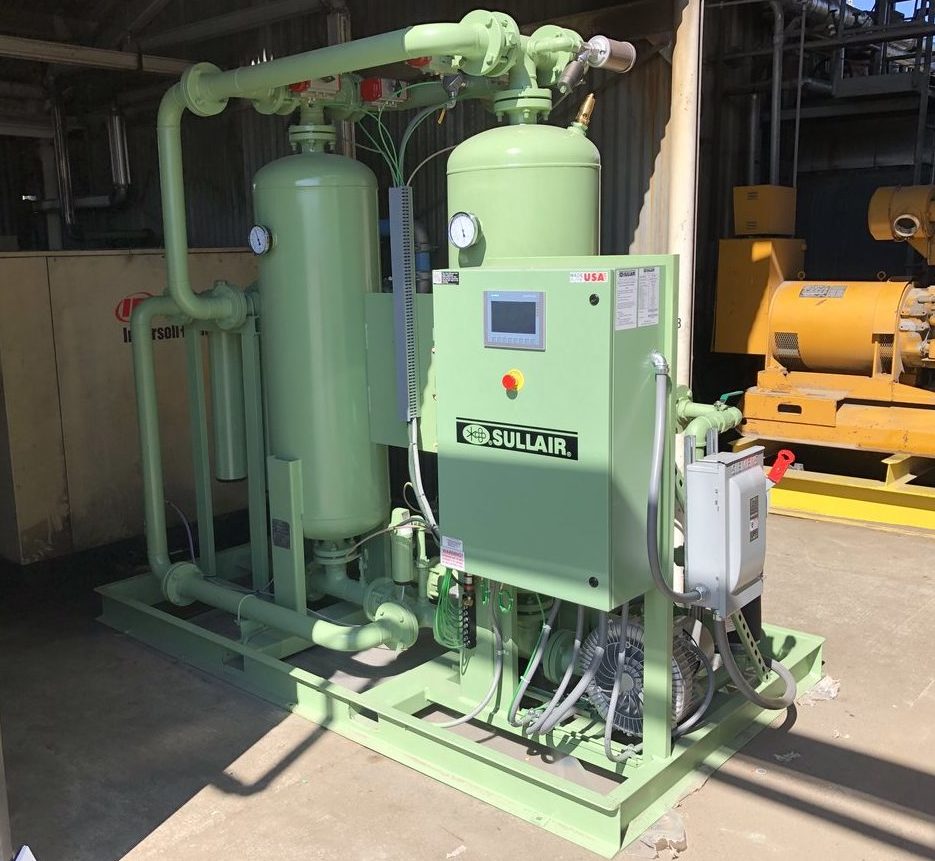
Desiccant dryers utilize two alternating towers filled with material designed to absorb the moisture in the condensed air. The air travels through a tower, removing moisture, before being sent to the plant. As one tower becomes saturated with moisture the system automatically switches towers until it ‘dries out’ then cycles back.
Desiccant dryers have several ways of maintaining the same air pressure: heatless, heated, and a heated blower purge. Heated desiccant dryers use an additional heat source to help dry the saturated desiccant, which reduces the amount of purge air needed compared to the heatless design. Heated blower purge dryers utilize an ambient air blower in addition to a heater to further reduce the amount of purge air used to achieve the desired pressure dewpoint.
Customers can expect higher initial costs when purchasing a desiccant dryer. Because this type of dryer does not rely on temperature to remove moisture, it costs less to operate annually.
Next Steps
Looking to upgrade your compressed air system? Ask our experts how Sullair’s compressors and dryers can reduce your utility bills here, by calling us at 1-800-452-PUMP, or emailing sales@nwpump.com. Looking for service for your compressors or dryers? Request service here, call us at 1-866-577-2755, or email us at service@nwpump.com.
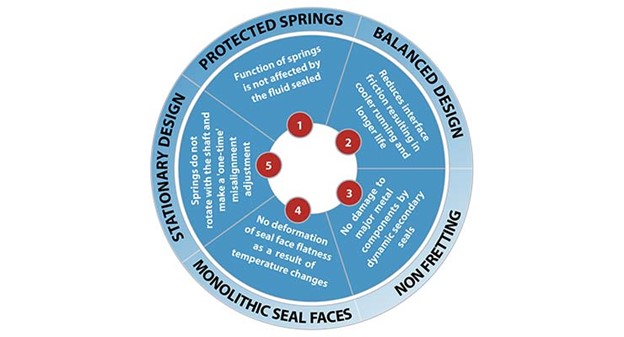
Oct 11, 2022 | Industrial, Services

A crucial step in preventative maintenance in pumps is finding and using the correct seal for the job. Mechanical seals are used to seal the rotating shaft in pumps and other equipment. With so many mechanical seal designs on the market, it can be difficult to identify which kinds to use. A.W. Chesterton Company’s mechanical seal design utilizes 5 design principles to maximize its sealing capabilities. These principles have been refined by Chesterton since the company brought its first mechanical seal to market in 1970. After all the lessons learned from successes and failures, they have determined the Five Key Features that a mechanical seal should have to reduce unplanned maintenance and downtime. To provide the greatest mean time between failures (MTBF) and avoid downtime, they utilize these five design principles in their sealing devices.
Protected Springs
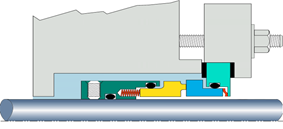
Spring protected from fluids | Image provided by A.W. Chesterton Company
Typically, within early mechanical seal designs, the springs were submerged within the fluid. However, this can lead to trouble when fluids with dirt or other contaminates interact with the springs. When the contaminates collect within the spring, it cannot correctly maintain the alignment necessary for a complete seal. Chesterton’s mechanical seal design protects the springs within the mechanical seal from the fluids being pumped.
Balanced Design
The second design feature and open secret of Chesterton’s mechanical seal design is balance. On the mechanical seal, there are two main sides, the fluid side, and the atmospheric side. To prevent moisture from leaking out of the seal, both sides put equal pressure on each other to trap the fluid. Many seals will often see that the fluid side exerts greater pressure than the atmospheric side. Not only does this reduce the quality of the seal, but it can also ruin the pump with time. Balanced seals reduce the seal ring area on which the hydraulic pressure of the liquid in the pump acts. This allows for better lubrication that results in lower heat generation, face wear, and power consumption. Balanced seals will generally have higher pressure ratings than unbalanced seals.
Non-fretting
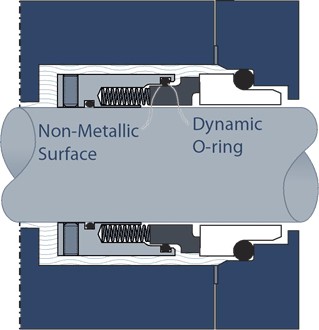
Non-Fretting Seal | Image provided by A.W. Chesterton Company
Fretting on a pump shaft refers to the way that a material is worn away on a shaft by an elastomeric material. An example may be a 316 stainless steel shaft sleeve that is damaged by a Viton O-ring. Stainless steel protects a shaft from corrosion by forming a chrome oxide layer on the surface. The dynamic O-ring wears that protective surface away and it then reforms. Over time the chrome oxide gets imbedded into the O-ring and works like sandpaper removing even more material. The result is a groove worn into your expensive sleeve and a leaking mechanical seal. Chesterton seals utilize designs that have any dynamic O-rings operating against a non-metallic surface, usually the sacrificial face.
Additionally, some manufacturers offer seals that are self-fretting, rather than shaft-fretting. What this means is that these seals do not fret or damage the shaft, they harm seal itself. While this protects the pumps, the O-rings still work against metal, reducing the lifespan of the seal itself.
Monolithic Seal Faces

Inserted vs Monolithic Seal Face | Image provided by A.W. Chesterton Company
Some mechanical seal designs utilize an inserted seal face, typically made of carbon or graphite inserted into a metal holder. However, the disadvantage to this technique is these non-metallic materials often react to heat differently than the metal of the seal. The result is the face of the seal is easily deformed- leading to leaks and early replacement of the seal. Proper mechanical seal design uses monolithic seal faces without using a holder and inserted face. By using Finite Element Analysis (computer modeling), Chesterton’s monolithic seal face designs are made more efficiently than ever.
Stationary Design

Rotary vs Stationary Seals | Image provided by A.W. Chesterton Company
Mechanical seals can either use rotating or stationary springs. With rotary mechanical seals, it is important that the stuffing box face is perpendicular to the shaft for the faces to stay closed. There will always be some resulting misalignment from installation and parts tolerances so this alignment cannot be assured. To compensate for the misalignment, the springs must adjust each time the shaft rotates to keep the seal faces closed. At motor speeds this adjustment happens thousands of times per minute (for 1800 rpm, 3600 adjustments occur) which is not only difficult to accomplish, the springs will fatigue and fail causing seal failure. Rotary seals are simple in design which makes them inexpensive
In contrast, a stationary seal is designed in such a way that the springs do not rotate with the pump shaft; they remain stationary. Because the springs do not rotate, they are unaffected by the rotation of the shaft or how fast the shaft rotates. The springs do not need to correct or adjust with each rotation; they adjust for misalignment only once when installed. Chesterton uses this as the fifth design requirement, and this provides greater life to their mechanical seals.
Chesterton 1510L in Action
Using these five design principles, Chesterton has updated its 150 seals to the new 1510 seal. The new design uses a monolithic seal face and changes where the dynamic O-rings are placed to be a non-fretting seal. Chesterton unveiled this updated seal in the US in September of 2022. However, Chesterton also has one additional add-on for this new seal. Starting at the end of October 2022, Chesterton will be releasing the 1510L. The 1510L has all the same design capabilities of the 1510, the difference between the two is the installation process. The 1510L utilizes a lock ring mechanism to simplify installation requiring the installer to tighten only one screw to connect the seal to the shaft.
Next Steps
To request a demonstration for the 1510L mechanical seal, click here. Learn more about Northwest Pump’s mechanical seals by contacting us here, emailing us at sales@nwpump.com, or by calling 1-800-452-PUMP.
For service on your mechanical seals by our Chesterton certified pump technicians, contact us here, email us at service@nwpump.com, or call 1-866-577-2755.
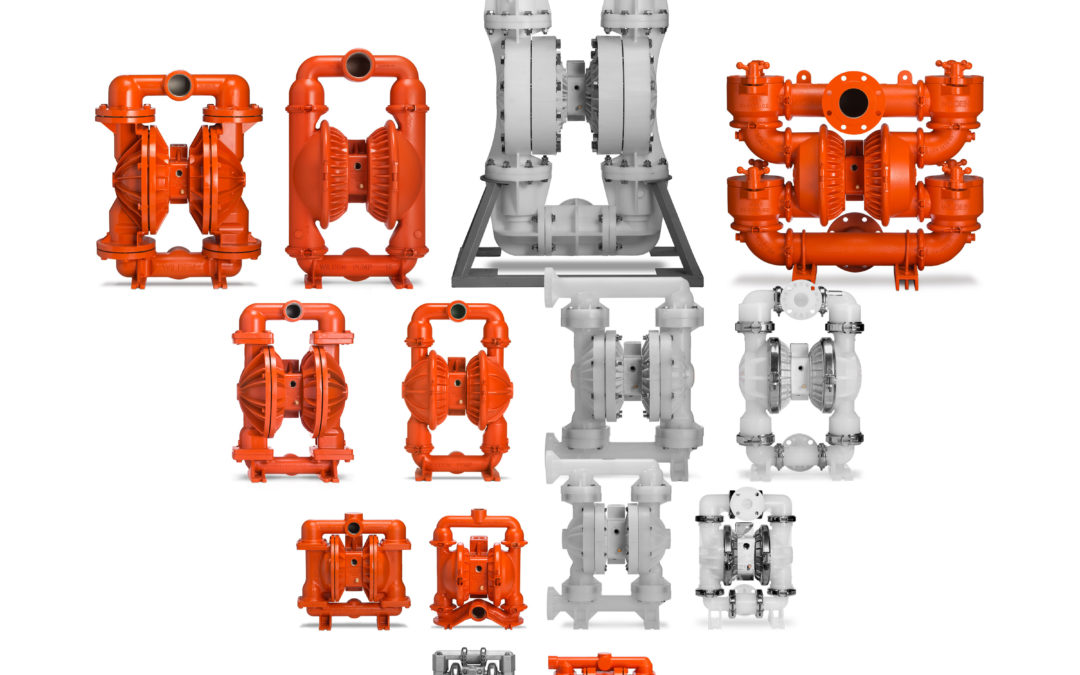
Sep 1, 2022 | Industrial
Sometimes, reliable solutions come in simple designs. So, why is it that for almost 70 years when people look at air-operated double-diaphragm (AODD) pumps they continue to ask about Wilden? Wilden sets its reliable AODD pump apart in five distinct ways: the variety of sizes & assembly styles, materials making up the pump, the number of parts used, the flow capacity, and the annual cost of ownership. Here is what makes Wilden stand out from its competition in providing reliable AODD pumps.
Number of Parts
Wilden offers its AODD pumps with as few parts as possible. This design creates a reliable AODD pump in a straightforward philosophy: less parts means less broken parts down the line. To showcase this, we can compare Wilden and its competitors. If we use a Wilden 2” Pro-Flo SHIFT Bolted Aluminum pump (referred to as a PS820) below, here is how many parts it has compared to the closest product from other AODD pump brands.
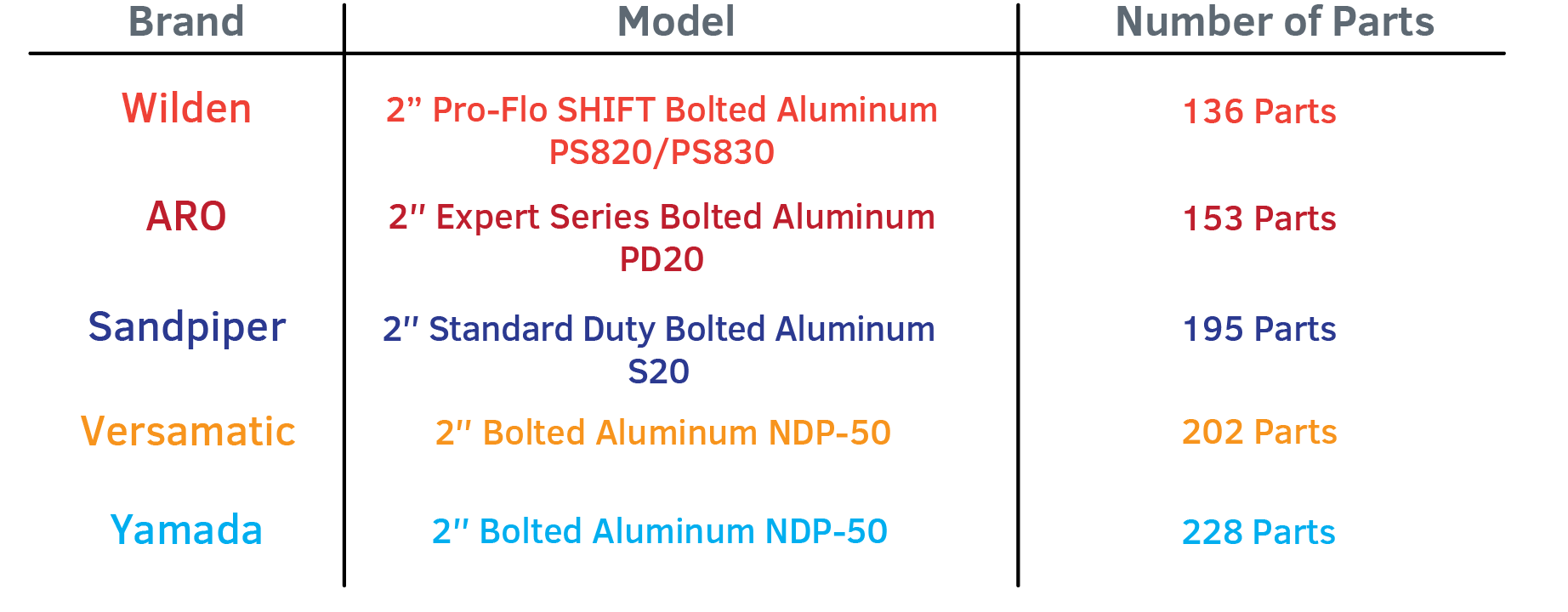
Data provided by PSG, a Dover Company
The PS820 has twenty parts less than ARO’s closest comparison. With twenty less parts, means twenty less potential areas for technicians to check for repairs, and more importantly, twenty less potential areas to break.
Available Assembly Styles & Sizes
Making sure that your pump is the size you need is an important part of buying industrial equipment. Additionally, AODD pumps typically are either bolted down or clamped. Bolting offers better fluid containment and efficiency as well as more output; but this style can often cost more than clamped pumps. However, clamped pumps offer easier access during maintenance without a sacrifice to reliability. So, how many styles and sizes do we see from the top brands.
Versamatic’s products were originally modeled after Wilden pumps, which means there is interchangeable parts between the brands. However, the ¼”, ½”, & 1” pumps do not have a clamped version. Additionally, Sandpiper’s Heavy Duty Ball design means that the end user will need to replace their current piping system with something more specialized. This process costs more and means that installation will be longer than plugging in the pump and letting it run.
Wilden offers its Pro-Flo Shift series in sizes ranging from ¼” to 3” in either bolted or clamped configurations. Additionally, Wilden also offers the Velocity series with compact ½” and ¼” sizes as well.
Materials of the Pump
Ensuring that the pumps’ materials are compatible with the pumped contents is critical to finding the right pump for a facility. Wilden offers a comprehensive chemical compatibility guide for end users to know what kind of material does not react to the pumped fluids. Wilden makes their metal pumps with aluminum, stainless steel, or ductile iron depending on the assembly style. With its plastic pumps, Wilden uses ‘virgin’ polyethylene, which protects against abrasive acids, making it a better choice for chemical processing. The material used for the wetted path or interior of the pump is the same throughout. This means that if the fluid being pumped does not react to the material of the pump, there is no concern for chemical reactions in any area of the pump.
However, there are other AODD pump brands that do not utilize these design features. For example, ARO offers plastic AODD pumps with a metal center section. This leads to potential chemical compatibility issues. Additionally, Yamada uses fiberglass to reinforce its polyethylene pumps. This can be especially dangerous when paired with aggressive acids, which can then wick through the reinforced areas.
Annual Cost of Ownership
Part of having a reliable AODD pump means that you can know how much that pump will cost per year. If we assume that a pump runs at eight hours a day, five days a week, we can compare costs across all brands. When all pumps are producing 140 gpm, ARO’s 2” EXP pump costs $2,715 annually. Yamada’s 2” NDP pump costs $3,757 annually. Wilden’s 2” Pro-Flo SHIFT pump costs $2,015 annually. This saves the Wilden customer $664 annually versus the ARO customer and $1,792 versus the Yamada customer. If we assume Graco’s 2” Husky & Wilden’s 2” Pro-Flo SHIFT are operating at 100 gpm, Wilden saves its customer $1,500 annually.
One of the factors contributing to the lower annual cost is a reduction in air consumption. Compressed air is often considered the fourth utility, so maximizing efficiency will contribute to a lowered bill every month. Wilden’s air consumption is anywhere from 24-48% lower than leading competitors, which translates to lower annual cost of ownership.
Flow Capacity
When buying a pump, having the best flow capacity for production is the key to success. If we compare 2” AODD pumps from Wilden and its 3 closest competitors, Wilden can pump 197.5 55 gallon drums of fluid in a single hour. The three competitors average together produce approximately 176.7 55 gallon drums.
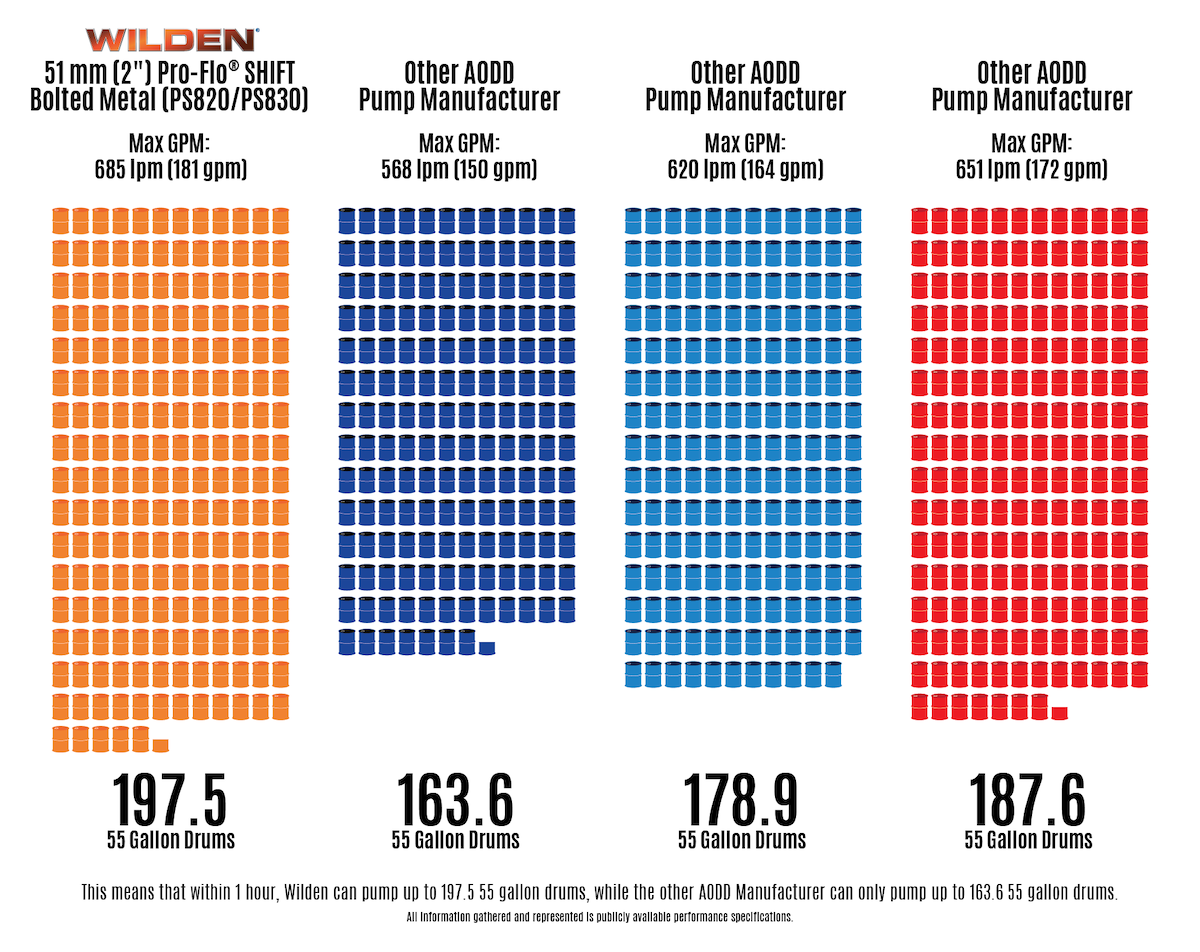
Data provided by PSG, a Dover Company
Next Steps
With a philosophy of simplicity, Wilden produces a more reliable AODD pump than its closest competitors. This accomplished with a lowered cost of ownership with a maximized flow capacity, fewer parts than the competitor, and consistent materials used throughout the design of the pump.
Northwest Pump is offering a deal on Wilden pumps until the end of 2022. Trade in your current AODD pump from any Wilden competitor (ARO, Graco, Murzan, Sandpiper, Versamatic, Yamada, etc), and receive a 15% discount on your new Wilden pump. Alternatively, if you are upgrading your current Wilden pump, you can trade that in as well for a 15% discount as well. To take advantage of this amazing deal, click here to have our team contact you with next steps.
Looking for service on your AODD pump? Northwest Pump offers an in-house pump shop in our Portland branch. Request service for your equipment here.
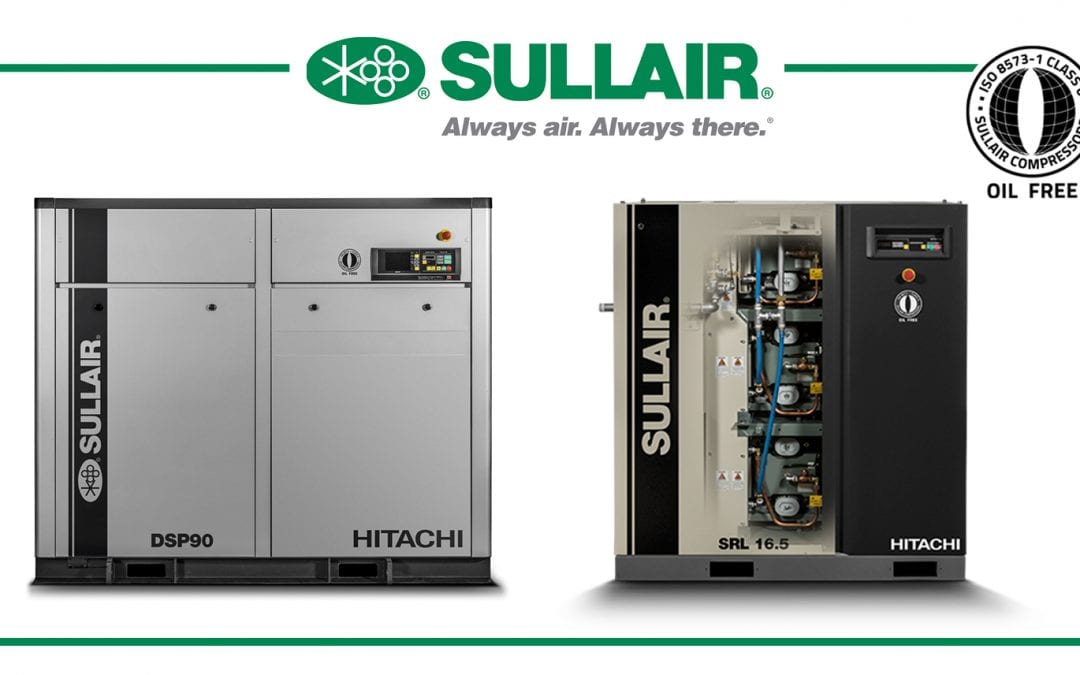
Aug 2, 2022 | Industrial
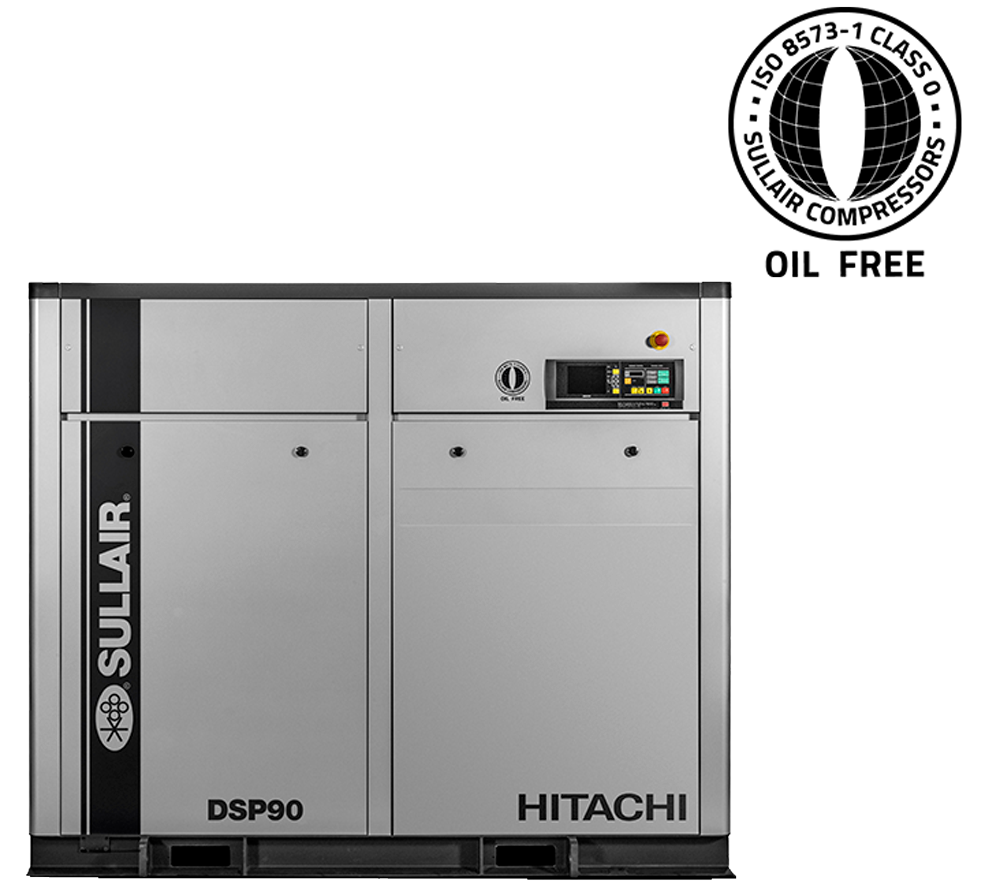 Air compressors are an important piece of equipment for any facility that uses them. However, with the wrong approach, an air compressor can account for half of the cost of annual electricity. There are many different ways to prevent this kind of waste. One way is to consider oil free or an oil less compressor over oil-flooded. What will be better for your situation will vary on your circumstances. Here are five ways that an oil free compressor can be advantageous over an oil-flooded compressor.
Air compressors are an important piece of equipment for any facility that uses them. However, with the wrong approach, an air compressor can account for half of the cost of annual electricity. There are many different ways to prevent this kind of waste. One way is to consider oil free or an oil less compressor over oil-flooded. What will be better for your situation will vary on your circumstances. Here are five ways that an oil free compressor can be advantageous over an oil-flooded compressor.
1. Oil Free Compressors Eliminate Product Contamination
For those with sensitive applications, an oil free compressor is especially beneficial over an oil-flooded compressor. End products and uses will have significantly less oil condensate. Any industries with sanitary requirements, such as Food & Beverage and Pharmaceutical manufacturing, would be better off utilizing oil free compressors for their facilities. This is especially true for Sullair’s oil free DSP series. The DSP series offers ISO Class 0 air, which means it goes beyond the regulations set by ISO, with fewer solid particles per million than Class 1 air. For example, one feature that allows for this is the rotary screws themselves resist toxic contaminates, which could potentially stick to the rotors and reduce the air quality over time.
2. Oil Free Compressors Reduce Maintenance Requirements
Sullair has designed its oil free compressors to be durable and requires less maintenance than other compressors. This is accomplished with patented PTFE-free coated stainless steel rotary screws, patented pre-cooler design, and a capacity control system designed to operate one million cycles per year. Additionally, these rotors do not degrade over time, unlike other rotors.
3. An Oil Free Compressor Reduces the Annual Cost of Ownership
In the same vein as needing less maintenance, Sullair’s oil free compressors cost less per year than other compressors. This is due to a mix of factors. First, is mentioned above, facilities do not need to spend money on repairs or services for their compressors. Second, oil free compressors from Sullair come standard with an oil mister. Since no lubricant is used in the air compression process, the DSP compressor uses much less oil than a lubricated compressor, which means paying less for lubricants through the years.
4. New Compressor Technology Increases Speed Without Increasing Noise
Yes, you read that correctly. More compressed air without the noise. Sullair compressors use Hitachi state-of-the-art motors that are efficient, compact, and consume 30% less power when kept at no load. This is paired with a noise reducing full enclosure and a solid baseplate to keep the compressor as quiet as a dishwasher.
5. Oil Free Compressors Reduces Carbon Emissions
It goes without saying that reducing the amount of oil and other contaminants in compressed air means that the compressor itself is a great choice for those looking to reduce their carbon footprint. Additionally, Sullair has many ways to reduce electricity waste with various attachments and innovations to their products.
Next Steps
Interested in how an oil free compressor can benefit you? Reach out to our sales team here, email us at sales@nwpump.com or call 1-800-452-PUMP to get started. Looking for maintenance on your current compressor equipment? Request service here, or contact us at service@nwpump.com or 1-866-577-2755.


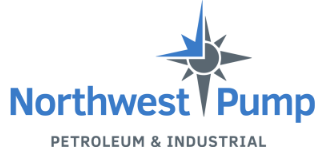




 In the time since the trip, our shop has upgraded its tool boxes for increased capacity & ease of use. Those visiting our Portland branch for any will calls should notice the warehouse now starting to make space for upcoming pump assemblies already. As we begin the process of updating the shop, we expect no impacts to repair times.
In the time since the trip, our shop has upgraded its tool boxes for increased capacity & ease of use. Those visiting our Portland branch for any will calls should notice the warehouse now starting to make space for upcoming pump assemblies already. As we begin the process of updating the shop, we expect no impacts to repair times.
 Facilities use dryers of either style to reduce the moisture in the compressed air. Excess moisture can cause problems for the equipment using the compressed air. Depending on the intended use, this moisture could also damage the end-product, reducing its quality or requiring it to be thrown out entirely.
Facilities use dryers of either style to reduce the moisture in the compressed air. Excess moisture can cause problems for the equipment using the compressed air. Depending on the intended use, this moisture could also damage the end-product, reducing its quality or requiring it to be thrown out entirely. There are several advantages facilities with refrigerated dryers can expect. First, they tend to be a cheaper investment than other kinds of compressed air dryers. Refrigerated dryers also typically have reduced maintenance costs. However, the cost to operate a refrigerated dryer will vary drastically depending on the ambient temperature around the dryer itself.
There are several advantages facilities with refrigerated dryers can expect. First, they tend to be a cheaper investment than other kinds of compressed air dryers. Refrigerated dryers also typically have reduced maintenance costs. However, the cost to operate a refrigerated dryer will vary drastically depending on the ambient temperature around the dryer itself.









 Air compressors are an important piece of equipment for any facility that uses them. However, with the wrong approach, an air compressor can account for half of the cost of annual electricity. There are many different ways to prevent this kind of waste. One way is to consider
Air compressors are an important piece of equipment for any facility that uses them. However, with the wrong approach, an air compressor can account for half of the cost of annual electricity. There are many different ways to prevent this kind of waste. One way is to consider